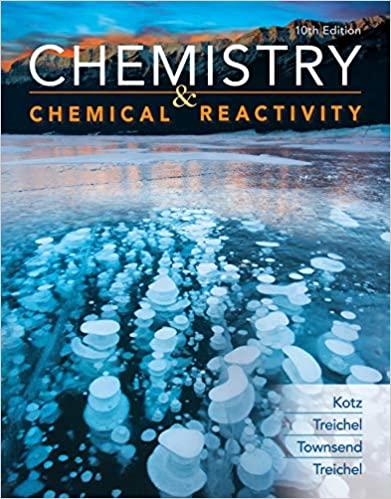You want to study the hydrolysis of the beautiful green, cobalt-based complex called transdichlorobis-( ethylenediamine)cobalt(III) ion, In
Question:
You want to study the hydrolysis of the beautiful green, cobalt-based complex called transdichlorobis-( ethylenediamine)cobalt(III) ion,
In this hydrolysis reaction, the green complexion trans–[Co(en)2Cl2]+ forms the red complexion [Co(en)2(H2O)Cl]2+ as a Cl− ion is replaced with a water molecule on the Co3+ ion (en =H2NCH2CH2NH2).![trans-[Co (en)Cl]+(aq) + HO(l) green [Co (en) (HO)CI]+ (aq) + Cl-(aq) red](https://s3.amazonaws.com/si.question.images/images/question_images/1697/6/2/8/146652fbff26e8fc1697628138386.jpg)
The reaction progress is followed by observing the color of the solution. The original solution is green, and the final solution is red, but at some intermediate stage when both the reactant and product are present, the solution is gray.
Reactions such as this have been studied extensively, and experiments suggest that the initial, slow step in the reaction is the breaking of the Co—Cl bond to give a five-coordinate intermediate. The intermediate is then attacked rapidly by water.
![Slow: trans-[Co (en)Cl]+ (aq) - Fast: [Co(en), Cl]+ (aq) + Cl(aq) [Co (en)Cl]2+ (aq) + HO(l) [Co(en)(HO)Cl]+](https://s3.amazonaws.com/si.question.images/images/question_images/1697/6/2/8/204652fc02cacc331697628203391.jpg)
(a) Based on the reaction mechanism, what is the predicted rate law?
(b) As the reaction proceeds, the color changes from green to red with an intermediate stage where the color is gray. The gray color is reached at the same time, no matter what the concentration of the green starting material (at the same temperature). How does this show the reaction is first-order in the green form ?Explain.
(c) The activation energy for a reaction can be found by plotting ln k versus 1/T. However, here we do not need to measure k directly. Instead, because k = −(1/t)ln([R]/[R]0), the time needed to achieve the gray color is a measure of k. Use the data below to find the activation energy.
Step by Step Answer:

Chemistry And Chemical Reactivity
ISBN: 9780357001172
10th Edition
Authors: John C. Kotz, Paul M. Treichel, John Townsend, David Treichel





